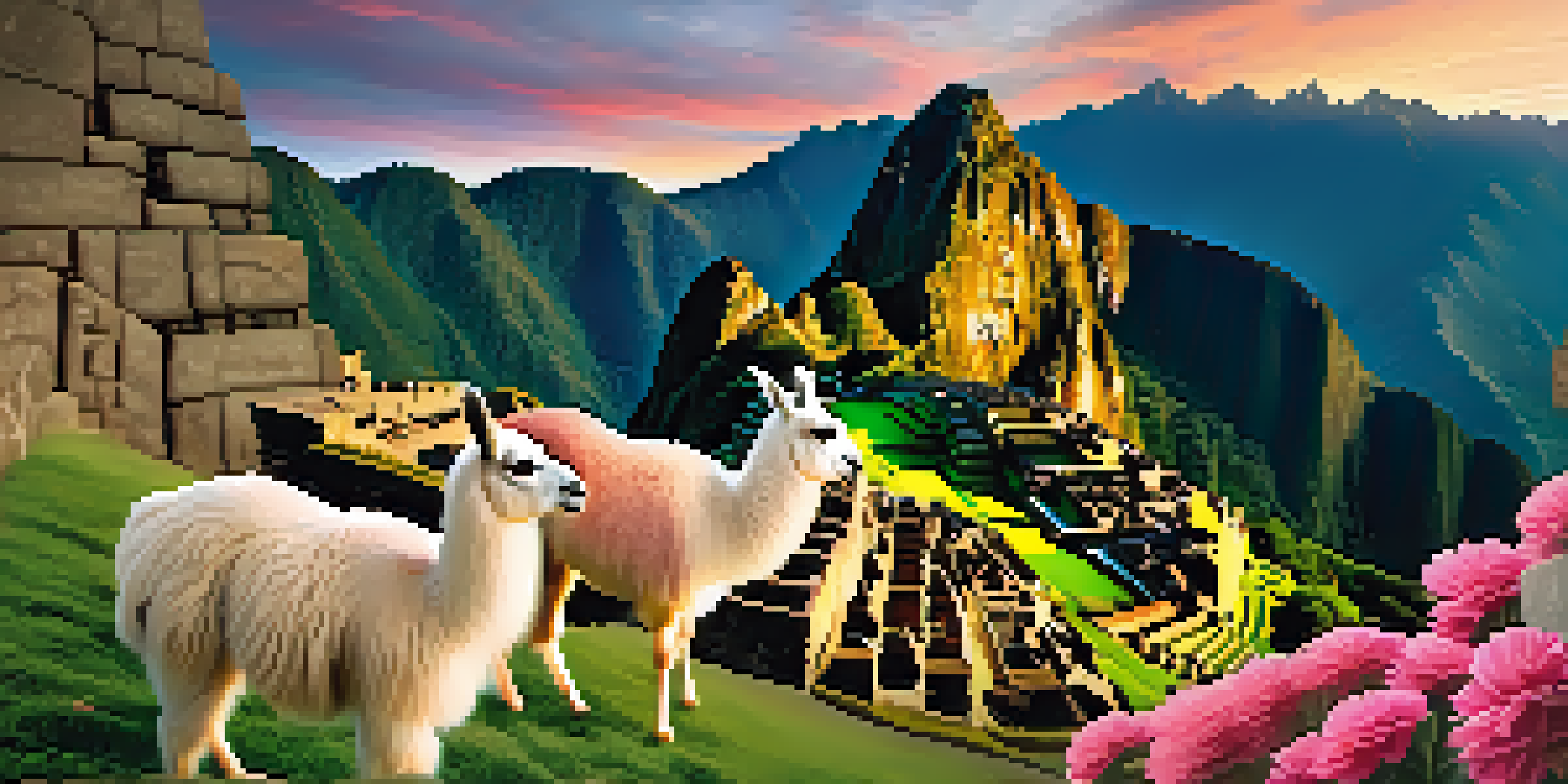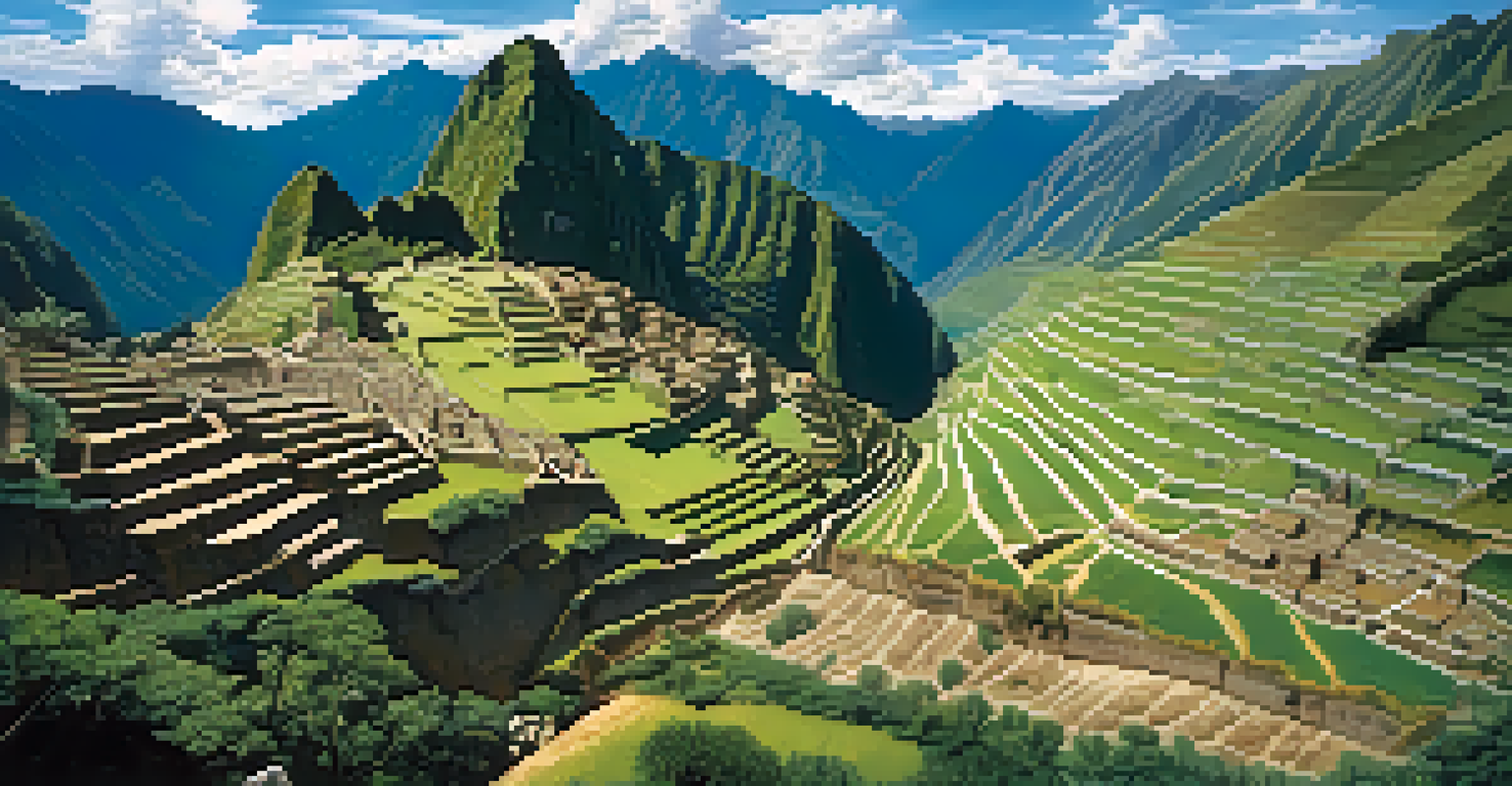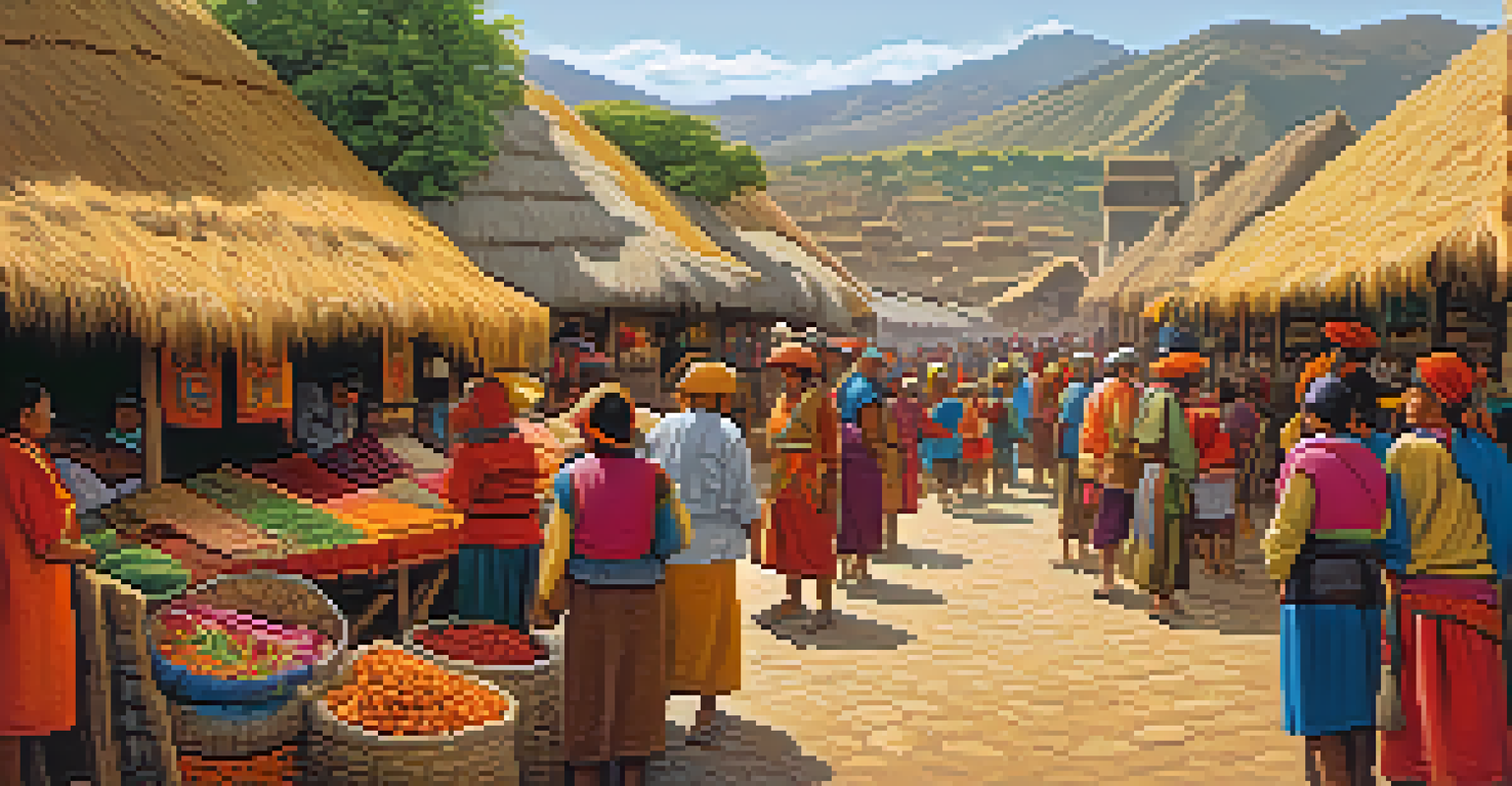Pachacuti: The Architect of Peru's Trade Routes

Pachacuti: A Brief Introduction to the Inca Leader
Pachacuti, born in the 15th century, was a pivotal figure in the Inca Empire. As the ninth ruler of the Incas, he was more than just a leader; he was a visionary who transformed a small kingdom into a vast empire. His reign marked the beginning of an era that would see the expansion of Inca territory and influence across the Andes.
Trade is a constant in human history, and through it, societies have evolved and flourished.
This remarkable leader is often credited with instituting significant social, political, and architectural changes. His innovative strategies not only fortified the Incas' military power but also laid the groundwork for an elaborate trade network. Through his efforts, Pachacuti became synonymous with both expansion and organization in the ancient world.
Understanding Pachacuti’s contributions provides insight into how the Inca Empire became one of the most sophisticated civilizations in pre-Columbian America. His legacy is still visible in Peru today, from ancient ruins to the very routes that facilitated trade.
The Importance of Trade Routes in the Inca Empire
Trade routes were the lifeblood of the Inca Empire, connecting various regions and enabling the exchange of goods, culture, and ideas. These routes were not just pathways for merchants; they facilitated communication and fostered unity among diverse communities. By establishing a network of roads, Pachacuti ensured that resources could be distributed efficiently across the empire.

The Inca roads were engineered with remarkable precision, allowing for the movement of goods like textiles, pottery, and agricultural products. These routes also played a crucial role in the swift mobilization of troops, enhancing the Incas' military capabilities. Essentially, Pachacuti understood that a strong economy was foundational to a strong empire.
Pachacuti Transformed the Inca Empire
Pachacuti's visionary leadership turned a small kingdom into a vast empire, enhancing military power and establishing a sophisticated trade network.
Additionally, these trade routes became conduits for cultural exchange, which enriched Inca society. Artisans and traders brought new ideas and techniques from various regions, fostering innovation and creativity within the empire.
Pachacuti's Role in Expanding Trade Routes
Pachacuti's reign saw the expansion of trade routes that stretched from the highlands to the coastal regions of Peru. He implemented strategic initiatives to enhance the existing networks, ensuring that they could support increased trade activity. This expansion was not merely geographical; it also involved the integration of diverse cultures and economies into a cohesive system.
Architecture should speak of its time and place, but yearn for timelessness.
By connecting various ecological zones, Pachacuti facilitated the exchange of unique products. For instance, the highlands provided potatoes and llamas while the coastal areas contributed seafood and cotton. This exchange helped the Inca Empire not only to thrive but also to adapt to changing environmental conditions.
Moreover, Pachacuti's vision included the establishment of way stations along the routes, known as 'tambos.' These rest stops provided shelter and supplies for travelers, which bolstered trade and communication efforts across the empire.
Architectural Innovations Under Pachacuti
Pachacuti's influence extended beyond trade into remarkable architectural achievements. He initiated the construction of iconic structures, such as the city of Machu Picchu, which served as both a royal estate and a strategic military outpost. These architectural feats not only showcased the Incas' engineering skills but also their commitment to integrating buildings within their natural landscape.
Much of the infrastructure created during his reign was designed to support the trade networks. Roads were meticulously constructed, often featuring stone paving and bridges that facilitated travel across challenging terrains. This attention to detail ensured that trade could flourish, further enhancing the empire's wealth and stability.
Trade Routes Fostered Unity and Growth
The extensive trade routes created under Pachacuti connected diverse regions, enabling efficient resource distribution and cultural exchange.
In essence, Pachacuti's architectural innovations were a reflection of his understanding that a strong infrastructure was vital for economic growth. These structures remain a testament to the Incas' ingenuity and their lasting impact on Peru.
The Role of Religion in Trade and Economy
Religion played a significant role in the Inca Empire, intertwining with trade and economic practices. Pachacuti understood that religious beliefs could influence trade relationships and economic stability. The Inca worshiped a pantheon of gods, and rituals were often tied to agricultural cycles and trade practices.
By promoting religious festivals and ceremonies, Pachacuti helped solidify social cohesion and encouraged trade during these events. Merchants would gather to exchange goods while participating in worship, fostering a sense of community and shared purpose. This integration of trade and religion contributed to the empire's economic prosperity.
Additionally, the temples and sacred sites built during his reign served as both religious and economic centers. They attracted pilgrims who brought offerings, effectively creating a bustling marketplace that benefited local economies.
Legacy of Pachacuti's Trade Routes Today
Today, the trade routes established by Pachacuti have left an indelible mark on Peru's cultural and economic landscape. Many of these ancient paths still exist and are used by modern communities, linking them to their historical roots. Tourists and historians alike traverse these routes, celebrating the legacy of the Inca civilization.
Moreover, the principles of trade and commerce that Pachacuti implemented continue to resonate in contemporary Peru. The country's diverse offerings, from agricultural products to artisanal crafts, reflect the rich traditions that arose from these historic trade networks. This ongoing connection to the past enriches Peru's cultural identity.
Architectural Innovations Supported Trade
Pachacuti's architectural projects, including Machu Picchu, were integral to the empire's trade networks, showcasing engineering prowess and promoting economic stability.
In a broader sense, Pachacuti's vision for trade serves as a reminder of the importance of connectivity in fostering growth and prosperity. As we look at trade in our globalized world today, his strategies provide valuable lessons in building networks that transcend borders.
Conclusion: The Enduring Impact of Pachacuti
Pachacuti's influence on Peru's trade routes and overall economy cannot be overstated. His visionary leadership and strategic expansions transformed the Inca Empire into a powerful force that thrived on trade and cultural exchange. Through his architectural innovations and understanding of the interconnectedness of trade and religion, he laid the foundation for a lasting legacy.
Even centuries later, the impact of his reign is felt in modern Peru, where the remnants of trade routes and Inca architecture attract millions of visitors. These sites not only provide a glimpse into the past but also celebrate the ingenuity and resilience of the Inca people.

Ultimately, Pachacuti's story is one of vision, strength, and enduring influence. His legacy reminds us of the significance of trade in shaping societies and the importance of leadership in fostering growth and connectivity.